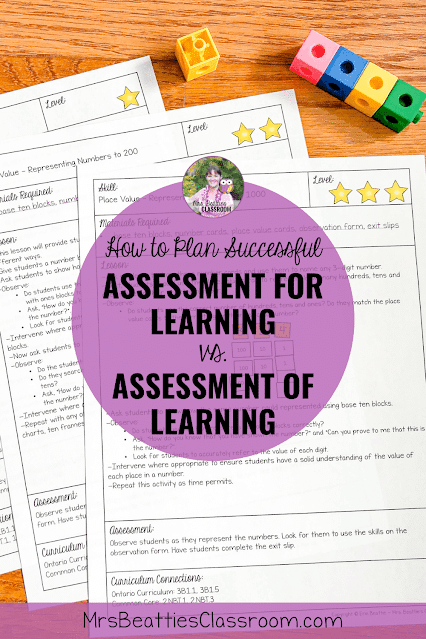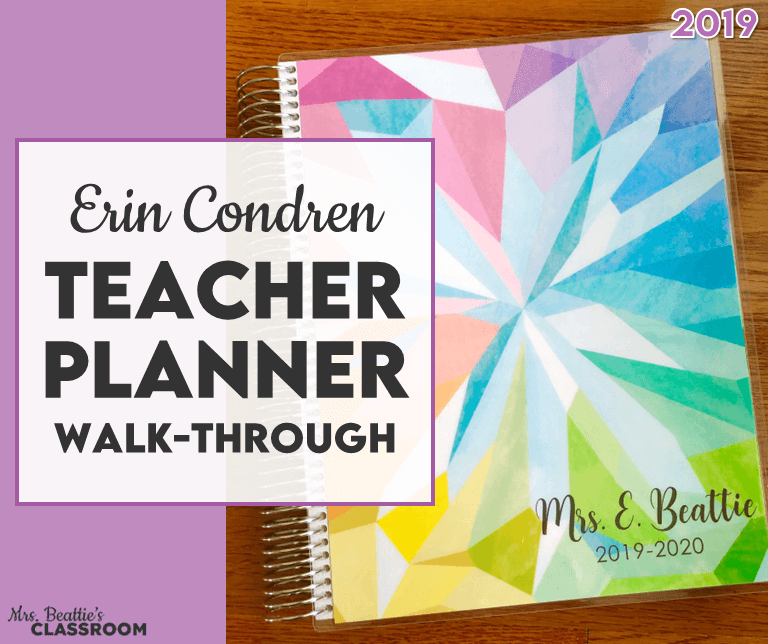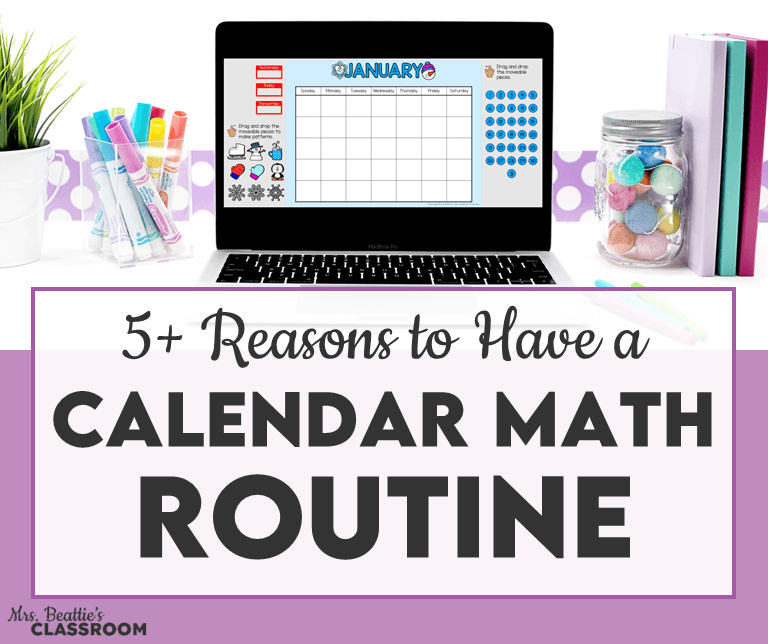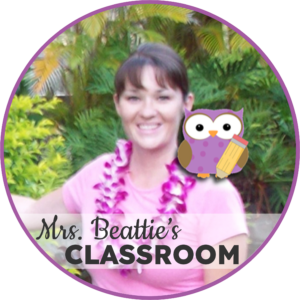Great teachers like you know the importance of having various assessments guiding their teaching, but did you know that specific types of assessments should happen at particular times in the learning process? Let’s check up on your use of assessment for learning vs. assessment of learning in math!

Assessment FOR vs. Assessment OF Learning
Assessment for learning occurs at the beginning of a unit and continues throughout. This assessment drives your instruction and helps you determine what needs reteaching or what your students already understand. It is a method of delivering feedback to your students on how they can improve. Assessment for learning has traditionally been referred to as diagnostic and formative assessment.
Assessment of learning occurs at the end of a unit and evaluates the knowledge the student has acquired. This assessment is judged and given a score or a level that refers to the curriculum’s standards or expectations. It is the type of evaluation traditionally referred to as summative assessment.
Assessment For Learning
At this stage, you are looking to see where your students are and where you want them to be and make decisions about how you will get there. There are many ways that teachers can engage in assessment for learning. Gone are the days when the paper-and-pencil evidence was the only thing that mattered. This triangulation of data, or relying on data from three different sources, is an essential part of the evaluation process in education today.
Observation
Teachers have professional judgment. Your observations are a very valid form of assessment in your classroom. The key to doing this well is in how you document your observations.
I like to use sticky notes with the expectations or evidence I’d like to see from each of my students for a particular lesson.
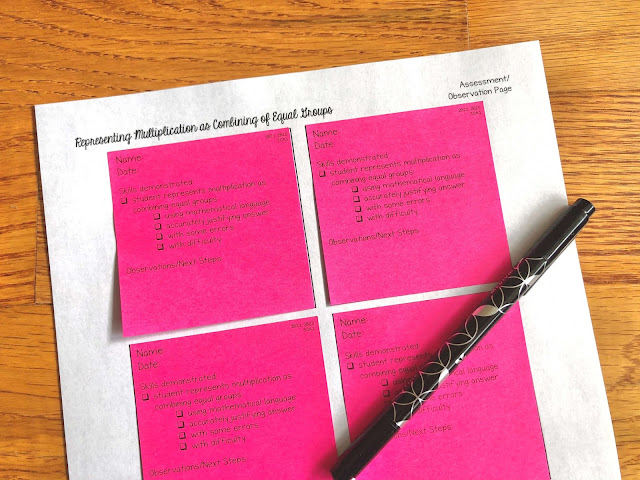
I can use these as checklists and places to jot quick notes about the students’ performance. I have an evidence collector page for each student, simply a place to stick each note I gather on that student.
Another strategy I use is to observe my students’ level of mastery with an activity. This is something that I typically use during independent work with the whole class. I jot each student’s name into a column on my chart to record their success with a task and put general notes about the next steps for my teaching at the bottom of each group.
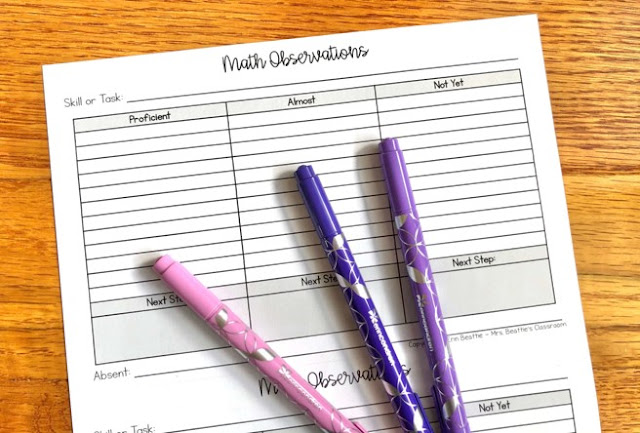
I also sometimes use a basic chart with spaces for each student to record my observations in point-form or coded format. An example of a coded format would be to use letters to stand for behaviors I observe, such as:
E = Engaged O = Off Task D = Distracted
or
P = Proficient G = Getting There S = Struggling
Whatever code you’d like to use is OK! This is only for your own reference.

Conversation
Conversations with your students, whether informal as you move through the classroom or more planned, like an interview, are an excellent way to gather data on your students’ understanding of a topic. I use my observation forms to jot notes when conversing with my students.
Conversations allow you to gather important information about how your students are progressing with their learning.
You might ask:
- Can you explain your thinking?
- Can you show me what you did here?
- Can you demonstrate how you found that answer?
- Can you tell me what you’ve learned?
- What are you finding easy?
- What are you finding difficult?
This is a particularly effective way to evaluate understanding in situations where written explanations might be challenging for students. Often, your students will be better able to talk about what they did than write about it.
Student Work
Of course, there is still a place for paper-and-pencil, or product-based, evidence. Worksheets or activity pages are easy to collect and assess at another time. Still, for any activities involving an element of demonstration or giving proof, such as with manipulatives, it can be challenging to collect this evidence to refer to later.
I love having iPads in my classroom so students can take photos of their work. They can then upload these photos to a shared Google folder, Seesaw, or another portfolio platform. Check with your technology team to see what is available and approved for use in your area.
What do I do with this information?
The goal of assessment for learning is to provide students with strategies and steps for improving their understanding. You will want to take the information you gather and:
- Adjust the lessons you have planned. Consider whether it would be appropriate to teach small guided groups instead of whole-class lessons to better differentiate them.
- Provide feedback in oral or written form.
- Share the next steps that students can implement independently or with support.
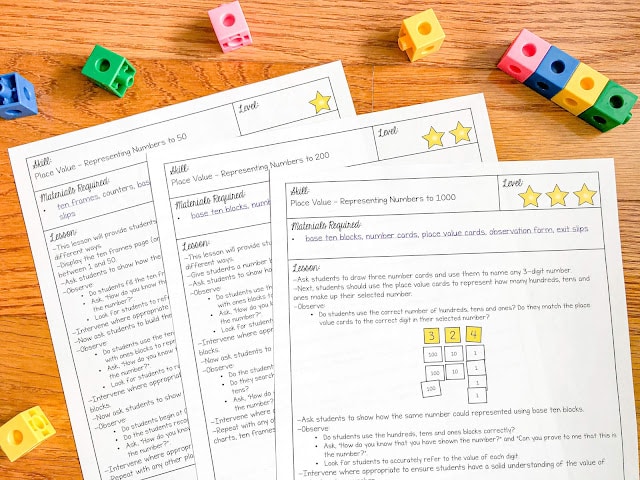
Assessment Of Learning
The assessment of learning is the evaluation stage. This data shows whether students have understood the expectations or standards in the curriculum. This assessment receives a mark or grade and can also be collected using triangulation. You will need to continue documenting your evidence in the same way you did during the assessment for the learning process.
Observation
If you teach your math lessons in small, guided groups, you will have fabulous opportunities to observe your students engaging with the math topic.
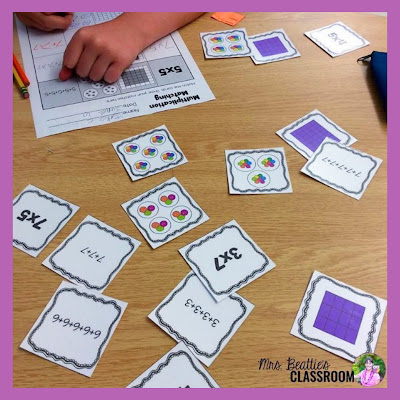
It is possible in these small groups to closely observe what students do as they work through a math process or problem. Watch for:
- How they interact with and use manipulatives.
- Whether they recognize errors or misconceptions.
- What they do when they make a mistake.
- How well they can persevere to complete a task.
- How they contribute to partner or group activities.
Of course, this is also a great time to talk about student learning!
Conversation
Assessment of learning can also occur through conversations with your students. The types of questions need not change. What is different is how you use the information you gain from the student responses.
You might ask:
- Can you explain your thinking?
- Can you show me what you did here?
- Can you demonstrate how you found that answer?
- Can you tell me what you’ve learned?
- What are you finding easy?
- What are you finding difficult?
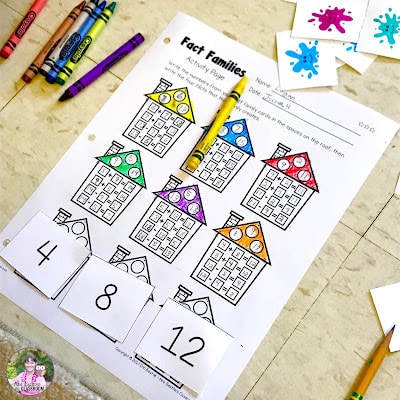
Student Work
As with assessment for learning, the student work you evaluate in this stage of the process can vary. Collecting paper-and-pencil tests or assignments is possible, but having the student demonstrate a process or understanding may be more valuable information!
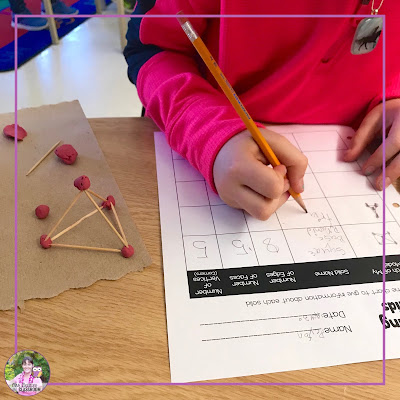
Managing Your Data
How you manage all of your observations and evidence of learning matters most when completing report cards. You don’t want to be shuffling through piles of random pages trying to locate the information you need for each student.
I have several methods of tracking student progress in my classroom.
I keep all of the sticky note observations on a separate page for each student in my guided math lesson binder.
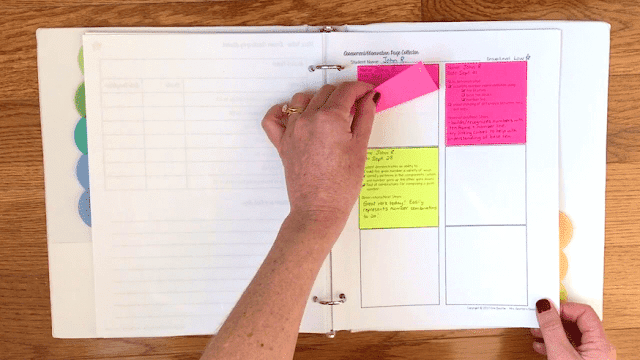
I have a binder for my whole-group observation pages. I usually use these to monitor progress and build my small groups for targeted teaching, so they aren’t as essential to have on hand during reporting.
Any marks I collect throughout a unit are entered into my iDoceo app. This is a paid app, but well worth the money, in my opinion. There are no privacy concerns when using this app, as all the data is stored on your device, not in a cloud or server.
Be sure to grab the observation forms for your classroom right here:
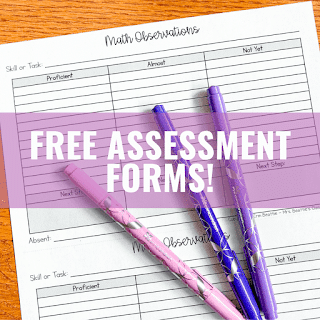
If you’d like more information about the resources I’ve shared in this post, you can find them here:
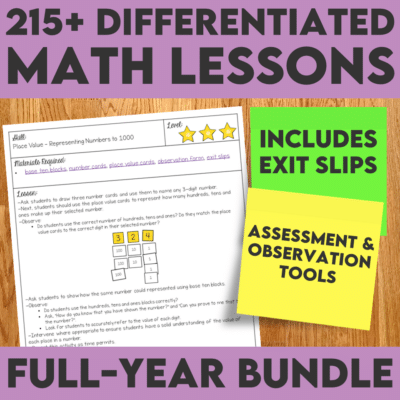
If you have enjoyed this post, please share it with friends and colleagues on Facebook or pin it on Pinterest:
